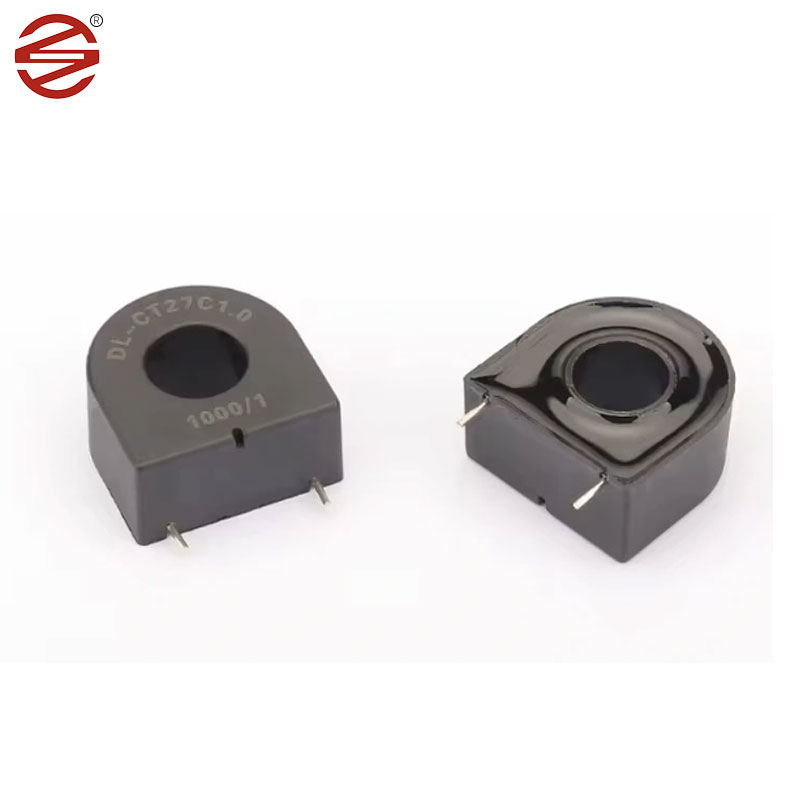How Do Current Transformers Play a Crucial Role in Electrical Measurement and Protection Systems?
2025-02-24
In the world of electrical engineering, accurate measurement and protection of electrical circuits are crucial for ensuring safety and efficiency. One of the key components in this process is the Current Transformer (CT). But how exactly do current transformers contribute to these vital functions, and why are they so indispensable in electrical systems? This blog will delve into the workings, applications, and importance of current transformers in various electrical systems.
What is a Current Transformer?
A Current Transformer is an electrical device used to measure alternating current (AC) in a circuit. It works by producing a reduced, proportional current that is easier to measure than the full current flowing in the primary circuit. This makes CTs a vital component for both measuring current and providing protection in electrical systems.
Typically, a CT is used with ammeters, energy meters, and protective relays to monitor and control the electrical current flowing through a circuit. By converting high currents to measurable and manageable levels, they enable precise monitoring without interrupting the normal operation of the system.
How Does a Current Transformer Work?
The operation of a current transformer is based on the principles of electromagnetic induction. The device consists of a primary winding (which is usually just one or a few turns of wire, often the conductor carrying the current to be measured) and a secondary winding (which has many turns of wire). The primary current induces a proportional current in the secondary winding, and this current can then be measured by connected meters or used by protective devices.
The ratio of the primary current to the secondary current is determined by the turns ratio of the transformer. For example, a CT with a ratio of 100:5 means that for every 100 amps flowing through the primary conductor, the secondary winding will produce 5 amps. This makes it easier to safely measure the current and take necessary actions without directly handling the high current.
Why Are Current Transformers Important in Electrical Systems?
1. Accurate Measurement
Current transformers are essential for the accurate measurement of electrical current in high-voltage circuits. Measuring current directly on high-power lines is dangerous and impractical, so CTs provide a safe and reliable method to measure the current indirectly. With the reduced current in the secondary winding, it becomes easier to monitor and analyze the electrical consumption, which is critical for billing, energy management, and system efficiency.
2. Protection of Electrical Equipment
One of the key roles of current transformers is to ensure the protection of electrical equipment. By connecting CTs to protection relays, electrical systems can quickly detect faults such as short circuits or overloads. If the current exceeds a safe threshold, the relay will trigger an alarm or disconnect the system to prevent further damage.
This protection mechanism is especially vital in large electrical systems, where undetected faults can lead to severe damage to equipment or even pose safety hazards. The CTs allow for real-time monitoring of the electrical current, which helps ensure that any irregularities are addressed immediately.
3. Facilitating Remote Monitoring
In modern electrical systems, the need for remote monitoring and control has grown significantly. Current transformers enable operators to remotely monitor the performance of electrical circuits, ensuring that everything is functioning properly without requiring manual checks. With the advent of smart meters and IoT-enabled devices, CTs can now send data to centralized systems where operators can analyze the information and take necessary actions from anywhere.
4. Energy Efficiency and Cost Reduction
Current transformers are integral to optimizing energy consumption. By providing accurate data on the flow of current, they help energy managers identify inefficiencies in the system and make adjustments to reduce energy waste. For businesses and industries, this leads to significant cost savings, as well as a reduced carbon footprint.
CTs can help ensure that electrical systems operate at their peak efficiency, which is essential for managing costs in large-scale operations and facilities.
5. Versatility and Application
Current transformers are incredibly versatile and find applications in a variety of industries. They are commonly used in:
- Power generation and distribution systems: to monitor and control the flow of electricity.
- Industrial facilities: for the protection of machinery and equipment.
- Renewable energy systems: to measure current in solar and wind installations.
- Residential metering: to monitor household electricity consumption.
Regardless of the industry, CTs provide a reliable and efficient solution for monitoring and protecting electrical circuits.
Different Types of Current Transformers
There are various types of current transformers designed to suit different applications. The two main categories are:
1. Wound Type CT: In this type, the primary winding is wound directly onto the transformer core. This type is used for high current applications where the primary current is too large to pass through the core without additional winding.
2. Bar Type CT: Here, the primary conductor itself acts as the primary winding. The secondary winding is wound around the core, and the conductor passes through the core. Bar CTs are typically used for lower current applications.
3. Toroidal CT: A ring-shaped CT in which the conductor passes through the center. Toroidal CTs are compact, efficient, and have a high degree of accuracy, making them ideal for modern electrical systems.
Conclusion
In conclusion, current transformers are essential components that ensure safe, accurate, and efficient measurement and protection of electrical circuits. By stepping down high current to a manageable level, they allow for precise monitoring, facilitate protection mechanisms, and help optimize energy use. Whether in residential, commercial, or industrial applications, CTs play a crucial role in keeping electrical systems safe and reliable.
As electrical systems continue to evolve, the role of current transformers will only grow more significant, with innovations such as smart grids and advanced metering systems requiring ever-more precise and efficient measurement tools. Understanding and utilizing CTs effectively is key to ensuring the long-term sustainability and safety of our electrical infrastructure.



